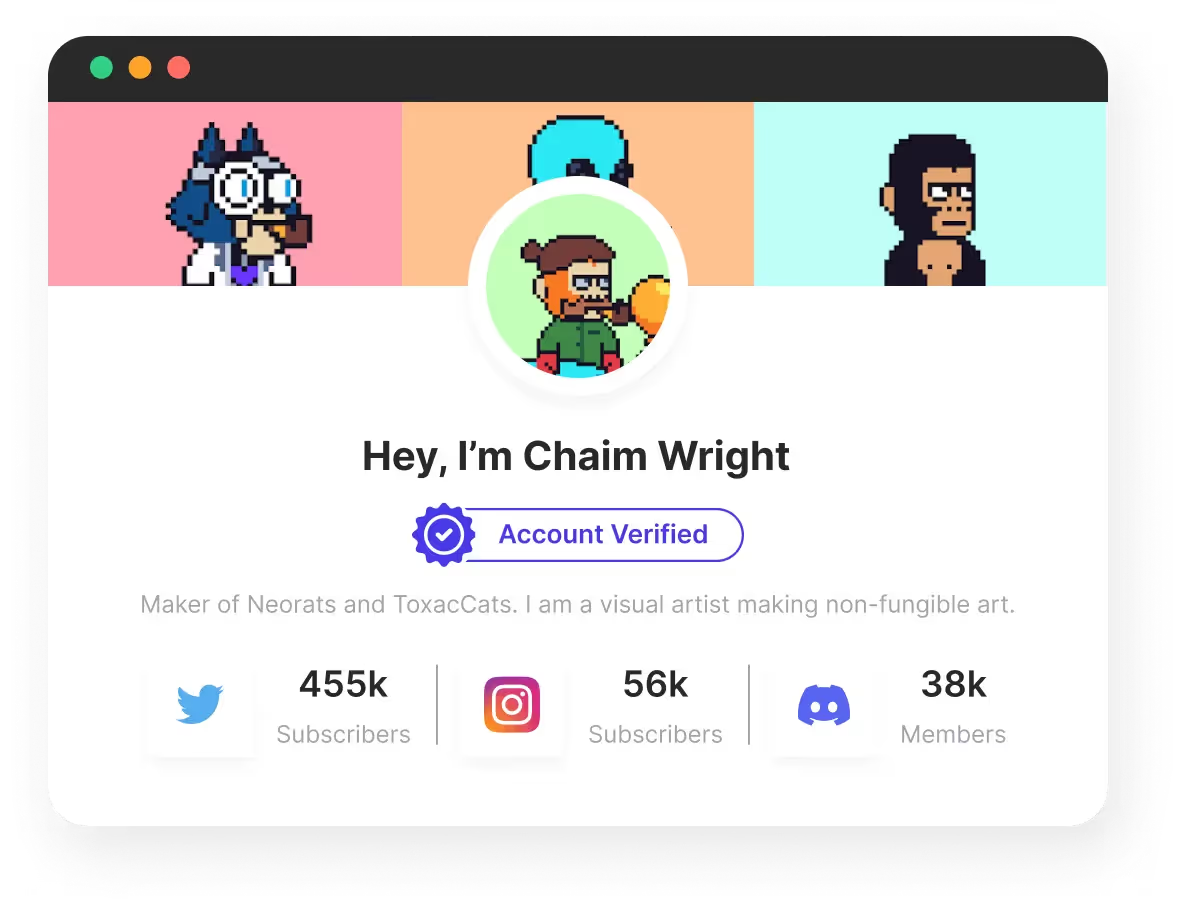The marketing landscape has undergone a significant transformation with the advent of social media platforms and influencer marketing. Traditional methods of reaching audiences have taken a back seat as brands now turn to social media influencers, individuals with sizable followings on platforms such as Instagram, YouTube, and Twitter, to showcase their products and services.
Social media influencers can shape followers’ attitudes and decisions, making them valuable brand assets. Typically, these influencers specialize in a specific niche. From fashion to food, beauty to fitness, these influencers are changing the game one post at a time.
In recent times, the impact of influencer marketing has been profound, making it an industry worth $32 billion. Brands have realized the enormous potential of collaborating with influencers to reach their target audience and drive sales.
However, the rising popularity of this marketing strategy has brought along a new challenge - the prevalence of fake influencers and fake followers.
Are you unknowingly working with a fake influencer? Let’s find out.
The Truth About Fake Followers
You’ve probably heard of influencers - social media stars who seem to have a massive following and command an enviable influence over their audience. But what happens when that following is a complete sham, artificially inflated by bots and fake accounts?
Enter the world of fake influencers - individuals who use underhanded tactics to deceive brands and genuine followers alike. By purchasing fake followers, likes, and engagement, they create a facade of popularity to attract lucrative brand partnerships.
Fake followers are artificially generated social media accounts that are used to boost the follower count. These accounts are often created by bots or purchased from third-party and are not genuine accounts of actual human followers. The use of fake followers is a common tactic employed by fake influencers to create the appearance of popularity and credibility. “You don’t have to go to the dark web or anything, you just go to the straight-up internet, and you can buy pretty much anything you want,” says Nick Bilton, a social media influencer starring in the HBO documentary “Fake Famous.”

But the deception goes deeper than just the numbers. By presenting themselves as influential when they’re not, fake influencers undercut the authenticity of the entire influencer marketing industry. The damage is felt by brands and consumers, who are left feeling disillusioned by the lack of transparency and honesty.
The power of social media influencers is undeniable, but with great power comes great responsibility. Unfortunately, not all influencers are up to the task.
Fake It Until You Make It: Infamous Examples of Fake Followers
In recent times, fake influencers have become a hot topic, with several high-profile cases making the headlines.
Perhaps one of the most shocking instances was the revelation that a company called Devumi was selling fake followers, likes, and comments to social media users. The company was operating a vast stockpile of at least 3.5 million bots, which they used to deliver fake engagement to customers.
Incredibly, they have sold over 200 million Twitter followers to their customer base. However, the company’s deceptive practices finally caught up with them and were shut down in 2018. Notably, this was the first time the United States government had punished a company for selling fake followers.
In a recent bust, the Mumbai Police uncovered a massive international racket involved in creating fake profiles and other fraudulent activities in the social media marketing industry. The accused had created over half a million fake followers for 176 profiles on popular platforms such as Instagram, TikTok, Facebook, and others.
These fake followers were then used to project the profiles as influencers, deceiving brands and companies into paying for partnerships and promotions.
The discovery of such a large-scale operation highlights the pervasive nature of the problem of identifying fake influencers and the significant impact it can have on the social media marketing industry.
Counting the Cost of Fakery: The Dangers of Working with Fake Influencers
The problem of fake influencers in influencer marketing is widespread and growing. According to a report by HypeAuditor, in 2021, 49% of all Instagram influencers worldwide were found to have used fake followers at some point.
A report states that these fake fans cost brands $1.3 billion in 2019 alone. This number is alarming, especially considering the vast sums of money brands invest in influencer marketing.
In 2023, it is estimated that the value of influencer marketing will be over $192 million in India. With so much at stake, brands must be able to identify fake influencers.
One of the biggest problems with fake influencers is that they can negatively impact the success of influencer marketing campaigns. Beyond the financial cost, partnering with fake influencers who use fake followers can result in significant brand reputational risks. Consumers increasingly value authenticity and transparency in their interactions with brands, and the existence of fake followers undermines these principles leading to decreased consumer trust.
Brands collaborate with influencers because they have a significant following and can help promote their products to a wider audience. However, fake influencers do not have a genuine following, meaning they cannot deliver the results that brands expect. This can lead to a waste of resources and damage the brand’s reputation.
Another issue with fake influencers is that they make it difficult for brands to measure their campaigns’ impact accurately. If the engagement and conversion rates are artificially inflated due to the presence of fake followers, it becomes challenging to determine whether the campaign is successful or not.
This lack of transparency makes it difficult for brands to evaluate the return on their investment and can lead to a loss of confidence in influencer marketing.
Unmasking the Pretenders: Tips for Spotting Fake Influencers
The good news is that there are ways to identify fake influencers. Here are a few things to look out for:
Know Your Influencer: Don’t Be Misled by Appearances

Don’t just take an influencer’s bio at face value. Do your homework and thoroughly research their profile to understand their authenticity. Look for reviews or comments from previous clients to gauge their credibility.
Check Engagement Rates: Numbers Don’t Lie

Genuine influencers typically have 3-6% engagement rates, so anything lower than that could be a red flag. Be wary of influencers with large followings but low engagement rates, as this could be a sign of fake followers.
Analyze Their Followers: Are They Real or Fake?

Analytical tools like platform APIs can help you determine whether an influencer’s followers are real or fake. Look for irregular patterns in the number of followers they gain or lose daily, and be cautious of influencers with a high number of likes and comments from suspicious accounts.
Check for Consistency in Content: Genuine vs. Fake Influencers
Genuine influencers typically have a consistent style and voice across their social media channels. If an influencer’s content is all over the place or of low quality, it could be a sign that they’re not genuinely invested in their platform.
Beyond the Hype: Spot Genuine Influencers Through Their Brand Partnerships
Take a closer look at the brands the influencer partners with. If you see multiple collaborations with unknown or lesser-known brands, it could be a sign that they are willing to work with anyone to get paid.
Genuine influencers often collaborate with brands that align with their niche or brand image, and their partnerships are typically more selective and strategic.
Phyllo’s Solution: Empowering Brands with Reliable Creator Data
In the fast-growing creator economy, having access to reliable and accurate creator data is crucial for success. However, the problem of fake influencers having fake followers has made it challenging to obtain reliable data. That’s where Phyllo comes in as a solution.

Phyllo is an API gateway that provides developers access to creators’ and independent workers’ data from popular platforms, including YouTube, Instagram, Twitch, TikTok, Shopify, and Upwork. With Phyllo, developers can get data from the source platforms as well as third-party agencies for evaluating the activity, engagement, and fan demographics of creators.

Phyllo is helping influencer marketing and creator economy companies identify fake influencers and onboard genuine ones with ease by tracking their content performance across 100+ social platforms in real-time. Some of our API solutions include the following:
- Identity API- Verifies a user’s identity and returns unique identifier information about the creator, such as name, email id, etc., depending upon the source platform.
- Engagement API- Provides real-time data about content created by a creator and a creator’s reputation from the source platform (e.g., subscribers, followers, etc.).
- Publish API- Allows creators to publish content directly from your app to the source creator platform.
- Income API- Provides easy-to-access data about creators and their income streams across different platforms.
Leveraging social media APIs for creator data has become a non-negotiable necessity in the creator economy. Phyllo’s user-friendly API offers an efficient data infrastructure that can benefit businesses looking to thrive in the creator economy.
Also read: How Beacons uses Phyllo to create the perfect media kit for creators to be successful
With Phyllo, you can easily identify fake followers and ensure you’re working with genuine influencers who can drive engagement and brand awareness. Let’s schedule a call to discuss how our platform can support your needs.

.avif)







